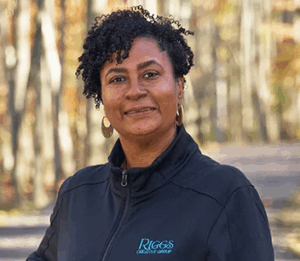Miller: Confronting the Opportunity Gap in Urban Schools During a Pandemic

Rann Miller
By Rann Miller | AC JosepH Media Guest Blogger
The Coronavirus has changed the face of education as we know it.
My wife and I looked forward to our daughter sharing with us her adventures from her first day in Kindergarten. Because of the Coronavirus pandemic, she’ll begin her adventures learning virtually. My wife and I don’t doubt the efforts of her school to maintain a safe environment where the risk of catching the virus at school is at the forefront of our minds.
I spoke with friends and family with school-age children who either teach in Camden or send their children to school in Camden, and they all share the same concerns for their children. So when the Camden City School District (CCSD) announced on Wednesday that it would start the year with remote instruction, I imagine it was a relief to them and to Camden parents.
READ: Adults, It’s On Us to Make Kids Feel Like Kids Again
It’s a relief for parents because they are aware of what the data shows; that the Coronavirus has devastated the Black and Hispanic communities and Camden is once again a hotspot.
Nationally, the Hispanic community is contracting the Coronavirus at a rate disproportionate to their population and Black people are dying from the Coronavirus at a rate disproportionate to their population; dying at two and a half times the rate of white people.
It would be wholly irresponsible for Governor Murphy to not allow school districts to begin the year with all remote instruction. According to the COVID Tracking Project, which tracks the impact the Coronavirus is having on people of color, in New Jersey, the Hispanic community makes up 20% of the population, 30% of reported cases and 20% of reported deaths. Meanwhile, Black people make up 13% of the population, 17% of reported cases and 18% of reported deaths.
The state’s department of education released survey data citing that a majority of respondents would send their children back to school if their school building would reopen. However they did not release those answers according to the race or socioeconomic status of the respondents.
It’s safe to presume those survey responses would look very different — particularly considering that the districts that initially announced plans to begin the school year with remote instruction (Bayonne, Dover, Elizabeth, Jersey City, South Brunswick, Trenton, and Willingboro) in addition to Camden and Newark —who is considering an all-remote start — are all districts where the majority of their students are students of color and low-income (with the exception of South Brunswick).
Figure 1: Racial & Economic Demographics of District Choosing Remote Learning Early
School District (County) % Students of Color % Low-Income Bayonne (Hudson) 60.7% 55.5% Camden (Camden) 99% 56.4% Dover (Morris) 95.5% 72.6% Elizabeth (Union) 92.2% 79.3% Jersey City (Hudson) 84.2% 60% South Brunswick (Middlesex) 79% 13.1% Trenton (Mercer) 99.1% 74.6% Willingboro (Burlington) 97% 65.4%
Source: NJ Department of Education
With that said, children must be educated and puzzles like the achievement gap between Black and white students must be addressed by educators and policymakers alike. The global pandemic makes solving that puzzle is even more urgent. To start, educators and policymakers must refrain from using the phrase “achievement gap.” The measure of achievement that designates gaps between Black and white students is based on standardized test scores, and standardized testing is rooted in racist policy and racist ideas.
We must reframe conversations about gaps in achievement between Black and white students as a gap in opportunity. The opportunity gap is the disparity in access to quality schools and the resources needed for all children to be academically successful.
Narrowing the opportunity gap will require some heavy lifting on the part of educators and policymakers. However there are some common-sense ways that principals and teachers can narrow gaps that’ll have an immediate impact of Black children and other children of color.
What we don’t need are “solutions” based on deficit thinking. For example, I worked in a junior-senior high school that identified that 88% of Black students had at least 1 failing grade; Black students only represented 27% of the student body. The administration believed that what was needed was mentoring for students, and being a Black educator, I was tapped to be one.
I didn’t mind mentoring, but I encouraged administrators to consider the idea that maybe something was wrong with teacher instruction and teacher assessment. It’s not Black children who are the problem when teachers are allowed to give only 1 test per marking period to assess kids and unlimited homework and classwork assignments weighted more than the one test grade they gave. Certainly interventions rooted in racist ideas, such as mentoring Black children because their parents’ exhibit poor behavior or they are without a parent, aren’t necessary either.
What’s needed are common sense solutions that can be put in place on the first day of school. Whether students are learning in-person or remotely, here is what schools can do to address the opportunity gap in light of the current pandemic:
- Refrain from assigning grades below fifty percent. Giving grades below a fifty, especially zero grades, don’t motivate students. It opens the door for the righteous indignation of teachers while shutting down students. What is the incentive for a student to stay engaged in a course and work hard if she or he feels there’s no way to climb out of a hole? If students feel there is no way out, they may withdraw, or worse, present a disciplinary confrontation. If the job of teaching is supporting students, then our grading must support their ability to persevere, not break their spirit.
- Initiate uniformity in how many assignments are given and how assignments are weighed. Too often, teachers are allowed to determine the category of assessments they choose to give, the grade weight of those categories and the amount of assignments per category to give each marking period and this differs from teacher to teacher within the same grade and content area. How can we determine growth or knowledge of students if we’re judging teachers of the same grade and content area whose method of assessing is different? How can we judge a student’s content knowledge and content growth if out of 40 graded assignments, 38 of them are classwork, 1 is a quiz and the other a test? It is the role of administrators and curriculum leaders to designate uniformity in grading and assignments to provide themselves with an accurate understanding of how students are assessed to judge if teachers are truly teaching and if students are truly learning.
- Don’t throw children out of or block them from remote learning platforms as a means of classroom management and/or discipline. Black students are disproportionately suspended from school compared to other students. In New Jersey, for every 100 students, 15 days are lost due to suspensions of any kind. In Camden County, Black students lose 77 days and Hispanic students lose 45 days. Throwing students out off or blocking them from the zoom call or google classroom, as some are doing, isn’t productive. Teachers and administrators will have to work on how to handle disciplinary matters but you can’t throw children out of virtual classrooms and say they don’t care about learning when you don’t care about teaching them.
Figure 2: School Days Lost To Suspension in Southern New Jersey
White Students Latinx Students Black Students Atlantic 12%** 27%** 63%** Burlington 5% 13% 29% Camden 9%** 45%** 77%** Cape May 10%** 14% 31% Cumberland 16%** 37%** 63%** Gloucester 7%** 11% 27% Ocean 8%** 24%** 66%** Salem 9%** 37%** 60%**
**Above State Average for Days Missed Per Race Category (6%-White Students, 19%-Hispanic Students, 43%-Black Students)
Source: American Civil Liberties Union
- Update your curricula to be culturally responsive and train your existing teachers to be culturally competent. Schools must have non-Eurocentric materials; that is, materials that focus on the accomplishments and history of Europe and the English-speaking world while offering little to no room in acknowledging those of the non-Western world. Research shows a relationship between positive racial identity and academic achievement for Black girls, Black boys, Native Americans, and Hispanic students. It is equally important that teachers be culturally competent. Nationwide, the majority of teachers are white and for white teachers, cultural competence means having the skills to both appreciate one’s own culture and be fluent in at least one additional culture. If you’re a white teacher whose students are Black children, it is imperative that you become fluent in Black culture.
- Hire more Black teachers. Black students who have had at least one Black teacher are more likely to graduate from high school, attend college and are less likely to drop out of school. Black students are less likely to receive exclusionary discipline at the hands of a Black teacher. In addition to those, Black students prefer to be taught by Black teachers. Another secret is that children of other races prefer Black teachers too; as well as Hispanic teachers. In short, Black teachers matter.
For all of the discussion of having the right mindset, educators must change theirs concerning Black academic achievement and that of all children of color. It is not a question of if Black students achieve; they can. However, the onus is on educators to provide Black students and all students with the opportunities to achieve. That means viewing a colorblind problem with an antiracist lens.
Bio: Rann Miller directs the 21st Century Community Learning Center, a federally funded after-school program located in southern New Jersey. He spent years teaching in charter schools in Camden, New Jersey. He is the creator, writer, and editor of the Official Urban Education Mixtape Blog. Follow him on Twitter: @UrbanEdDJ.
Follow Us Today On:
Note from AC JosepH Media: If you like this story and others posted on Front Runner New Jersey.com, lend us a hand so we can keep producing articles like these for New Jersey and the world to see. Click on SUPPORT FRNJ and make a contribution that will do directly in making more stories like this available. Thank you for reading.






